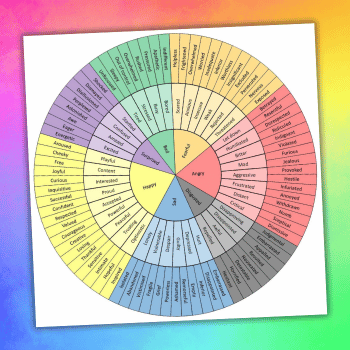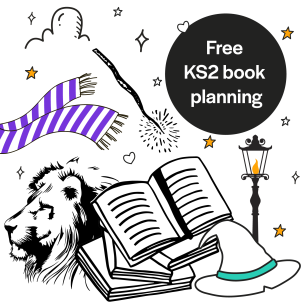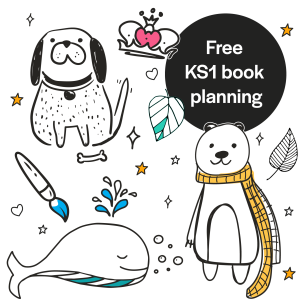Using an emotion vocabulary wheel to provide students with emotive language examples in English lessons can be an effective tool for expanding pupils’ emotional vocabulary and enhancing their language skills.
Emotions play a significant role in human communication, and having a rich repertoire of emotional words can greatly enhance a person’s ability to express themselves accurately and eloquently.
This emotion wheel covers seven main emotions:
- Surprised
- Bad
- Fearful
- Angry
- Disgusted
- Sad
- Happy
Each of these emotions is then broken down into more nuanced synonyms, before these in turn are also broken down once more.
For example:
- Surprised > Excited > Eager
- Bad > Stressed > Overwhelmed
- Fearful > Threatened > Exposed
- Angry > Let down > Betrayed
- Disgusted > Repelled > Horrified
- Sad > Hurt > Disappointed
- Happy > Content > Joyful
Below are some suggestions for using these emotive language examples in your next English lesson.
Introducing emotive language examples
Begin by introducing the concept of emotions and their importance in communication. Explain that emotions are complex and varied, and different words can be used to describe similar feelings.
Introduce the emotion vocabulary wheel as a visual tool that can help students explore and understand a range of emotions.
Vocabulary expansion
Provide students with the emotion vocabulary wheel. Encourage them to study the wheel and familiarise themselves with the different words and their meanings.
Discuss each emotion category, providing examples and encouraging students to contribute their own examples.
Contextualisation
Help students understand how these emotional words are used in different contexts. Provide them with sample sentences or short paragraphs where these emotions are expressed.
Encourage them to identify the appropriate emotional word to complete the sentence or describe the situation. This exercise helps students grasp the nuances of each emotion and its application.
Role-playing and discussions
Engage students in role-playing activities or discussions that require them to express and respond to various emotions using the vocabulary from the wheel.
This encourages active participation and allows students to practise using the words in a meaningful and interactive way. It also promotes empathy and understanding of others’ emotions.
Writing exercises using emotive language examples
Assign writing exercises that require students to use the emotional vocabulary in descriptive paragraphs, short stories, or dialogues.
Encourage them to incorporate as many emotional words from the wheel as possible, emphasising the importance of choosing the most appropriate word for each emotion.
Provide feedback on their usage and encourage revision to enhance their language skills further.
Creative projects
Encourage students to create their own emotion vocabulary wheels or posters, expanding on the existing categories or adding new ones.
This activity promotes creativity, critical thinking and a deeper understanding of emotions. Students can present their projects to the class, explaining their choices and discussing the significance of different emotional words.
By incorporating an emotion vocabulary wheel into English lessons, students can develop a broader emotional vocabulary and gain a better understanding of the nuances of each emotion.
This not only enhances their language skills but also improves their ability to communicate effectively and empathetically in various social and cultural contexts.
Browse more emotive language KS2 teaching ideas and more ambitious vocabulary resources..














